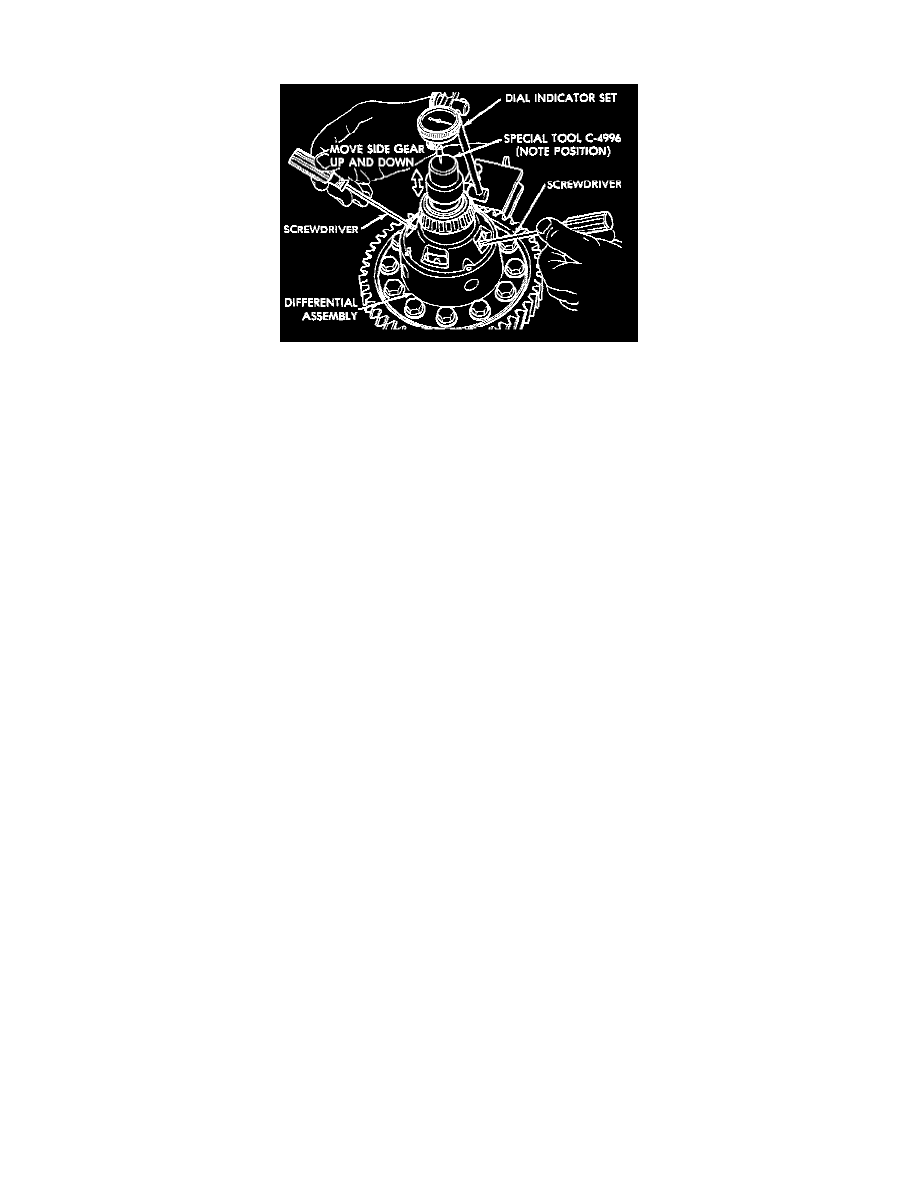Caravan AWD V6-201 3.3L (1991)

GENERAL RULES ON SERVICING BEARINGS
Checking Side Gear End Play
1. Take extreme care when removing and installing bearing cups and cones. Use only an arbor press for installation, as a hammer may not properly
align the bearing cup or cone. Burrs or nicks on the bearing seat will give a false end play reading while gauging for proper shims. Improperly
seated bearing cups and cones are subject to low mileage failure.
2. Bearing cups and cones should be replaced if they show signs of pitting or heat distress. If distress is seen on either the cup or bearing rollers, both
cup and cone must be replaced.
3. Bearing preload and drag torque specifications must be maintained to avoid premature bearing failures. Used (original) bearing may lose up to
50% of the original drag torque after break in. All bearing adjustments must be made with no other component interference or gear intermesh.
4. Replace bearings as a pair. For example, if one differential bearing is defective, replace both differential bearings. If one input shaft bearing is
defective, replace both input shaft bearings.
Bearing cones must not be reused if removed.
6. Turning torque readings should be obtained while smoothly rotating in either direction (breakaway reading is not indicative of the true turning
torque).
7. Replace oil baffle, if damaged.
INPUT SHAFT BEARING END PLAY ADJUSTMENT
1. Using Tool C-4656 with Handle C-4171, press input shaft front bearing cup slightly forward in case. Then, using Tool C-4655 with Handle
C-4171, press bearing cup back into case from the front. Properly position bearing cup, before checking input shaft end play (see input shaft front
bearing cup replace in Subassembly Recondition section). This step is not necessary if Tool C-4655 was previously used to install input shaft front
bearing cup in the case. Also no input shaft shim has been installed since pressing cup into case.
2. Select a gauging shim which will give 0.025 to 0.254mm (0.001 to 0.010 inch) end play. SUGGESTION: Measure original shim from input shaft
seal retainer and select a shim 0.254mm (0.010 inch) thinner than original for the gauging shim.
3. Install gauging shim on bearing cup and install input shaft seal retainer.
CAUTION: The input shaft seal retainer is used to draw the input shaft front bearing cup the proper distance into the case bore during this step.
Alternately tighten input shaft seal retainer bolts until input shaft seal retainer is bottomed against case. Tighten bolts to 26 N-m (21 ft. lbs.).
4. Oil input shaft bearings with SAE 5W-30 engine oil and install input shaft in case. Install bearing retainer plate with input shaft rear bearing cup
pressed in and bearing support plate installed. Tighten all bolts and nuts to 28 N-m (21 ft. lbs.).
5. Position dial indicator to check input shaft end play. Apply moderate load, by hand, to input shaft splines. Push toward rear while rotating input
shaft back and forth a number of times to settle out bearings. Zero dial indicator. Pull input shaft toward the front while rotating input shaft back
and forth a number of times to settle out bearings. Record end play.
